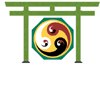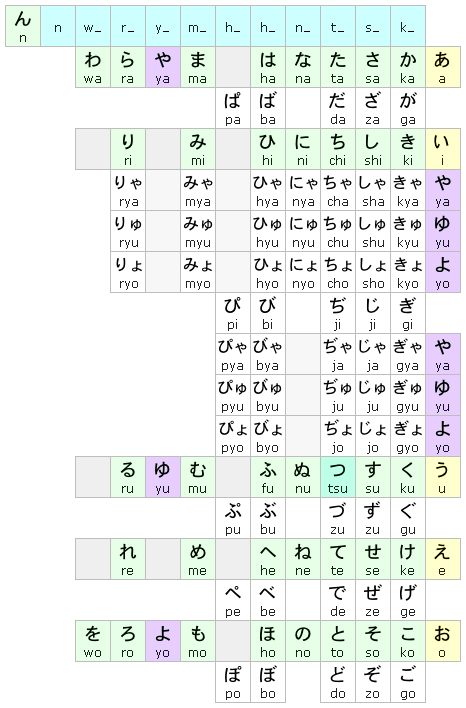
A Book of Little Traditions

|
minzoku NEO-shintô A Book of Little Traditions |
|
|
ToC |
||
|
hiragana – 01 / 12 / 2014
|
||
| hiragana is a syllabary; the kana (characters) only represent sounds in the Japanese language and have no other meanings*. The blue boxes contain the consonants¹. The yellow boxes contain the five vowels and their kana. The green and purple boxes contain the 40 primary kana formed from a consonant-vowel pair, and the 'short n' kana. The white boxes contain secondary kana that are formed from the primary kana, and the small double slash diacritic mark, or ring diacritic mark, or small 'ya', 'yu', or 'yo' characters. As can be seen from the chart, these secondary characters represent modified primary sounds. In hiragana, a half-height 'tsu' (see blue-green box below) preceeding a consonant is used to indicate a long or double consonant – k, s, t, or p. | ||
|
* Some of the kana are used as particles – words that indicate what part of a sentence other words are – subject, object, etc. ¹ Actually, Japanese isn't taught as vowels and consonants. In Japan, the hiragana is taught as phonemes – that is one kana (grapheme) is one haku (mora or unit of time). |
||
 |
||
| If you would like to practice writing Japanese in hiragana, here is a hiragana Keyboard based on the chart above – courtesy of shi-yaku-jin no hokora. | ||
|
|